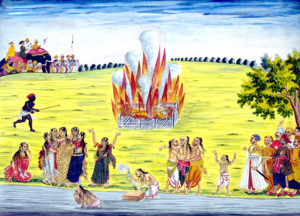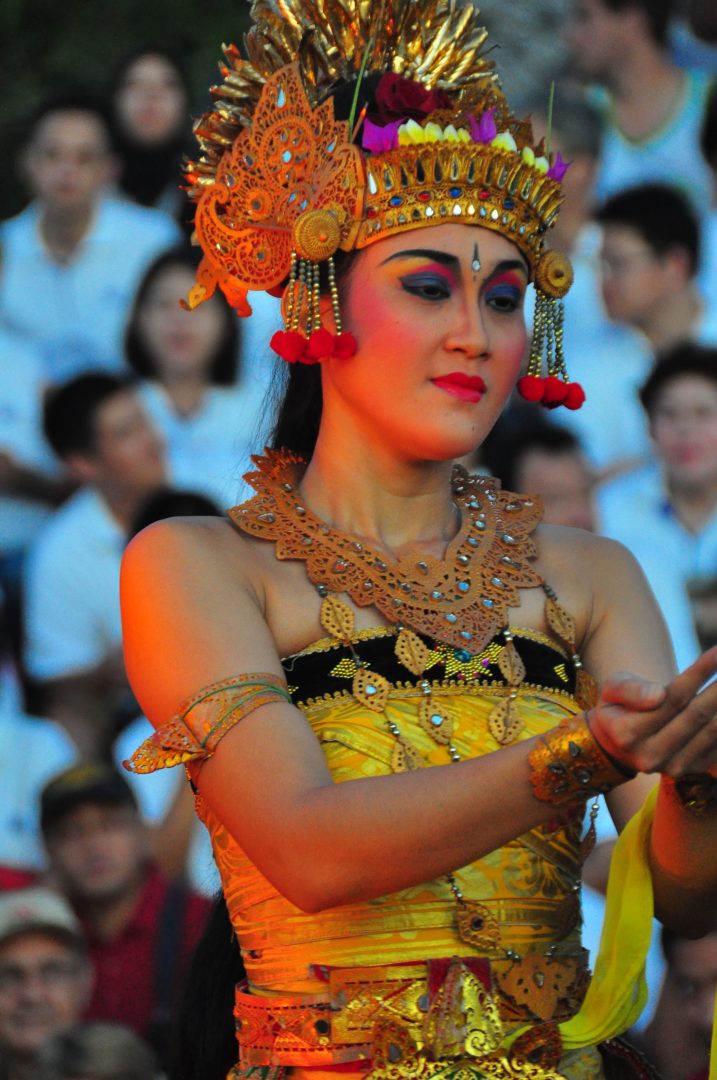The participation (or roles) of women in Hinduism provides a fascinating study of one of the oldest religions. The Aryans, who settled northwest India, brought their patriarchal and family-oriented religion with them. According to Katherine Young’s article “Hinduism”: “Despite male dominance, woman, as wife and mother were important” to their religious goals of “progeny, prosperity, and longevity. Young argues that originally Hinduism “had an appreciation of femininity and the complementary relationship between husband and wife, albeit within a patriarchal structure.
As the religion “aged” the role of women in Hinduism became rigidly structured and increasingly subordinate to the husband. Her duty was to produce sons to contribute to the wealth of the patriarchal family. In this role, she contributed to the “order of family, society, and the cosmos.”
During the classical period of Hinduism, the educational gulf between men and women widened. As the Brahmans increased their control of Hinduism, women were forbidden to assemble, were required to take food after their husbands, had no rights to inheritance, and their lot was made even more insecure by increased polygamy.
Young makes an interesting observation that for women “chastity and purity became a substitute for knowledge.” As the Indian Hindu caste systems developed, “female chastity became a major issue” because “a man’s status was not unrelated to his daughter’s or wife’s chastity.”
As Hinduism responded to the challenges of Jainism and Buddhist asceticism, the religious orientation of women changed.
The Brahmans quietly instituted a Hindu synthesis that produced “an uneasy coexistence between the spiritualized materialism” (the old way) “and the orientation of asceticism and enlightenment”
 Because women were excluded from Vedic study, they were not automatically excluded from new notions of salvation (“moksha”) having been unable to prepare for enlightenment. The best they could hope for was to follow and support their husbands in the male quest for spiritual development.
Because women were excluded from Vedic study, they were not automatically excluded from new notions of salvation (“moksha”) having been unable to prepare for enlightenment. The best they could hope for was to follow and support their husbands in the male quest for spiritual development.
The ideal behavior of a Hindu woman both “entailed special privilege” and involved exclusion from aspects of men’s religion. The Hindu woman was to focus on her husband; he was to be her god.'” Young maintains that one respite from this psychological subservience was the presence and “periodic elevation to supremacy” of goddesses and their “nominal identification of women.”
Another striking example of the “ideal” Hindu woman was the practice of “sati,” where the woman voluntarily died on her husband’s funeral pyre. More commonly (and understandably) was the woman’s choice of widowhood, which had its own rite of passage. Women who chose the sati were viewed as auspicious, whereas “the one whose husband is gone was considered as positively inauspicious.” Worse, the widow was known as an “ogress who ate here husband with her karmic jaws.”
In summary, the Hindu religion was at the outset patriarchal. As it developed into its classical stage, the role of women became increasingly subordinate to the point where husbands were deified and central to women’s existence.






